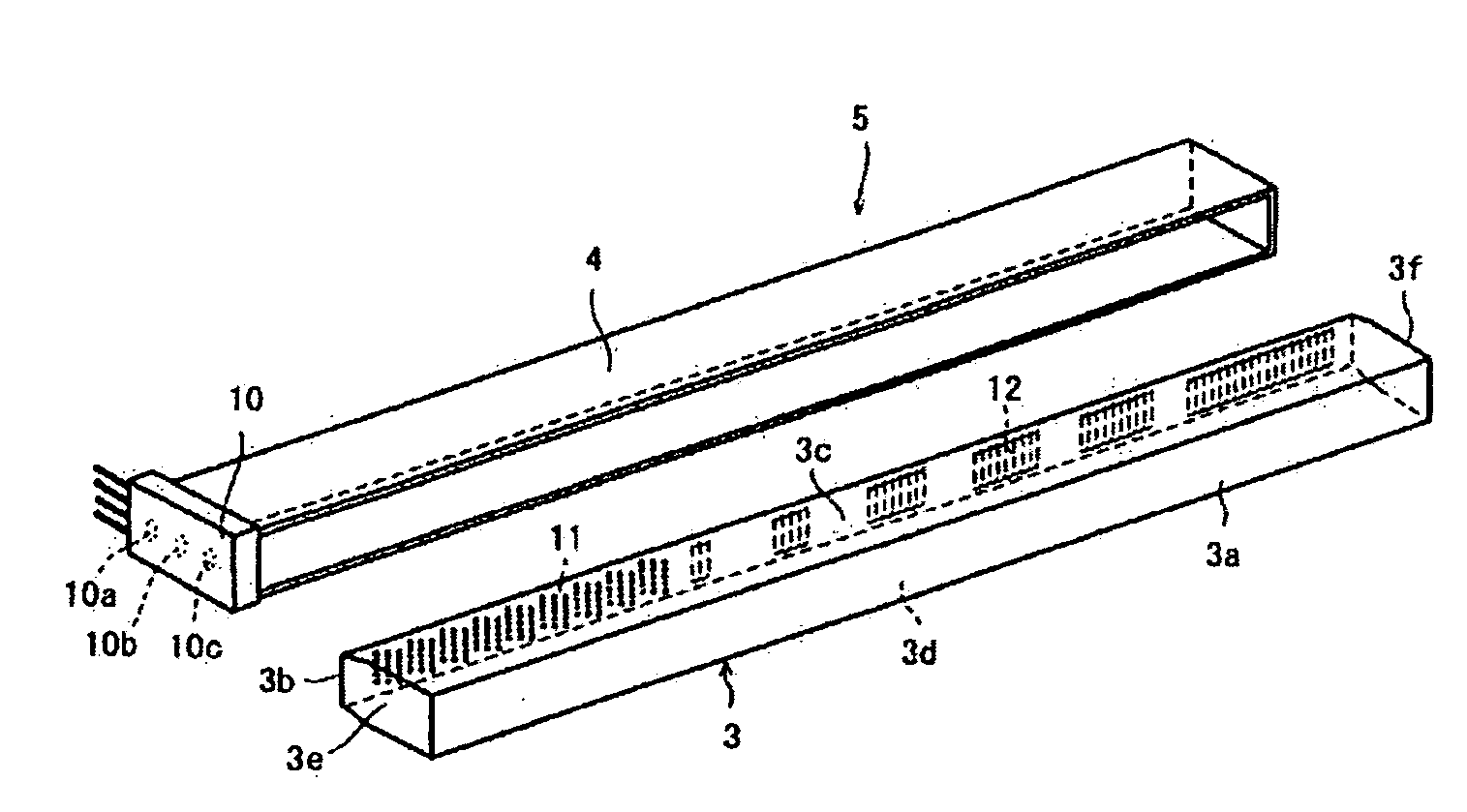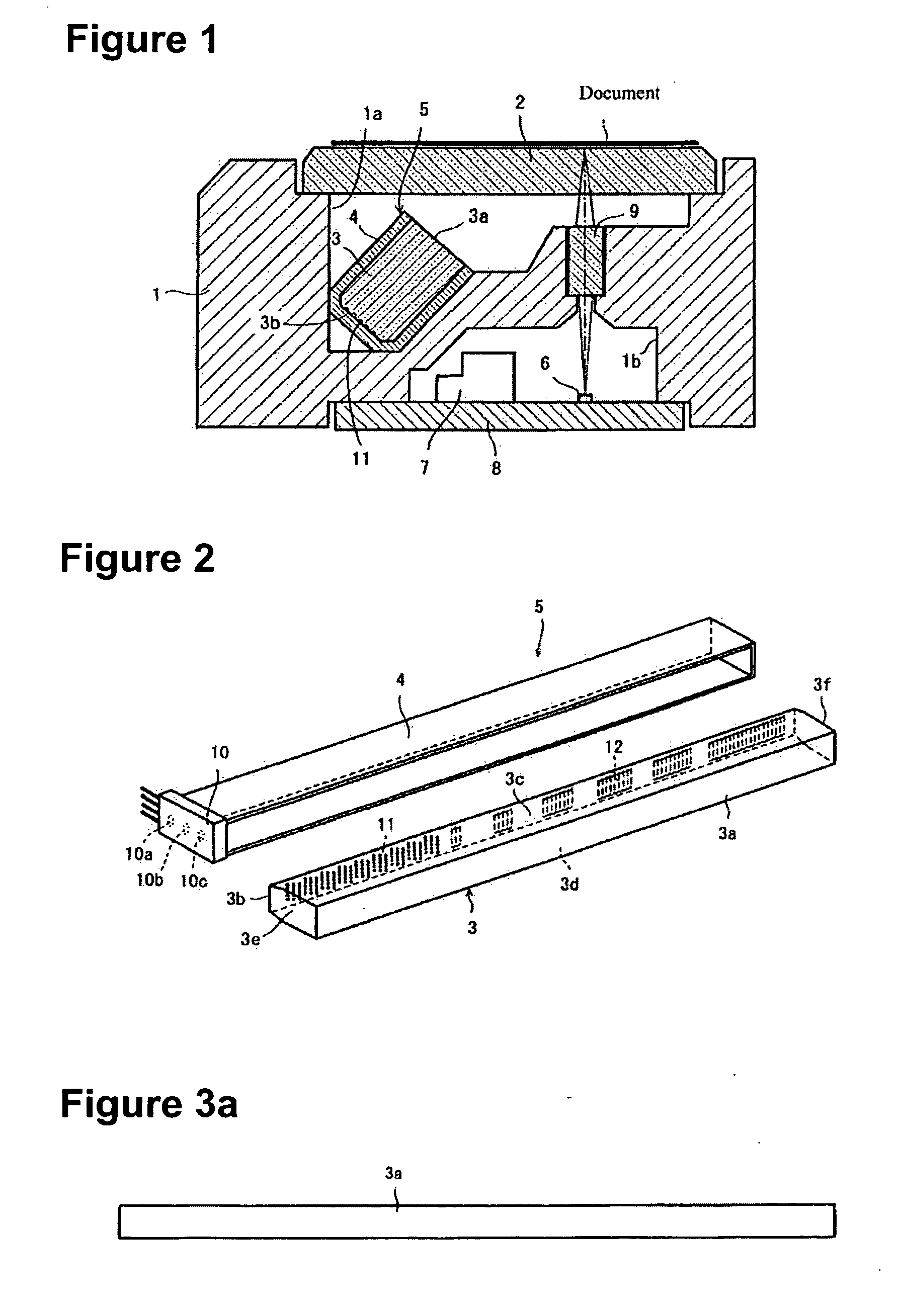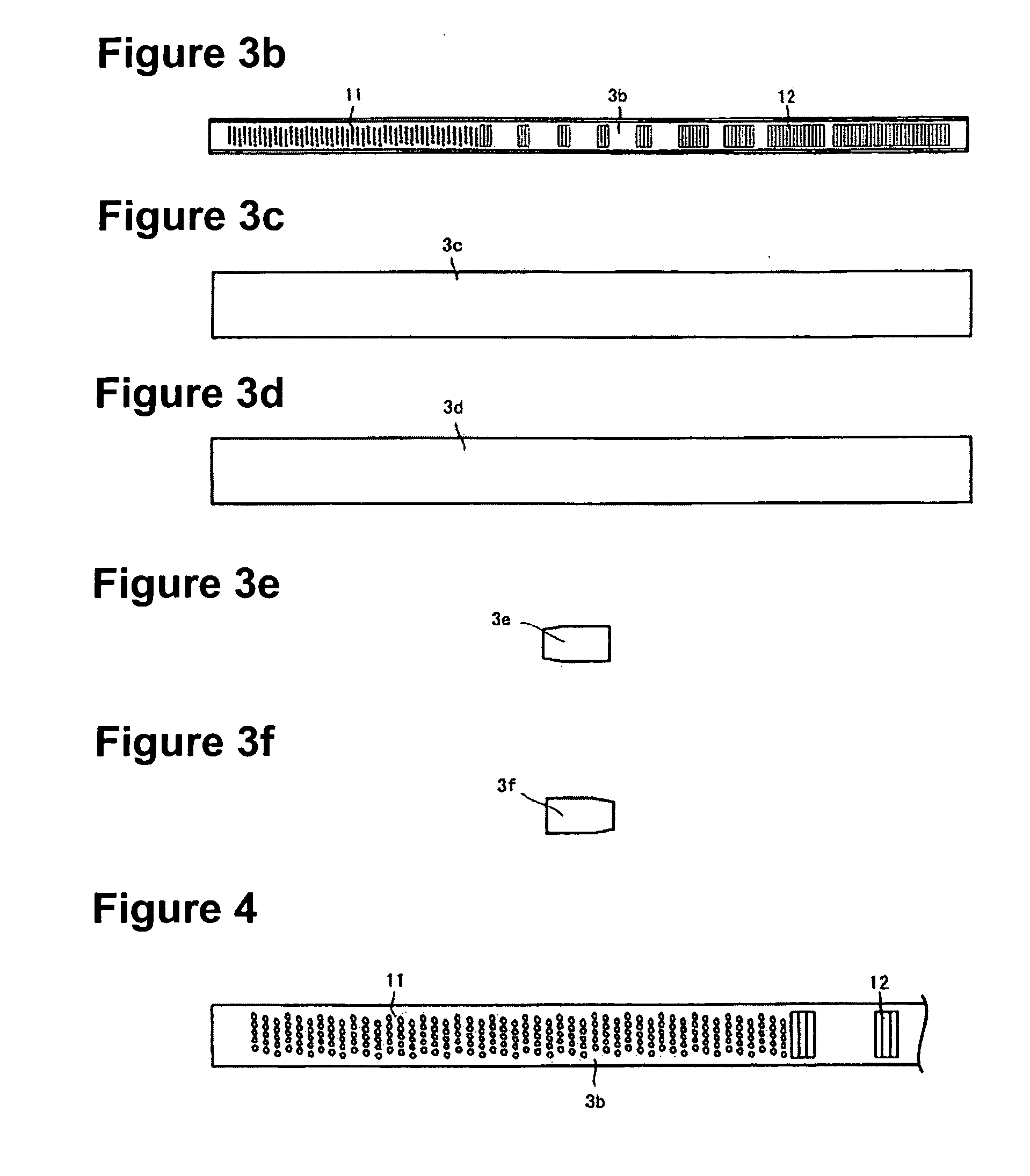Light guide and image reader
a technology of image reader and light guide, which is applied in the field of light guide, can solve the problems of color unevenness, increase of cost and dispersion of characteristics of light scattering pattern, etc., and achieve the effects of avoiding color unevenness, reducing manufacturing cost, and preventing the reduction of the amount of light emitted
- Summary
- Abstract
- Description
- Claims
- Application Information
AI Technical Summary
Benefits of technology
Problems solved by technology
Method used
Image
Examples
Embodiment Construction
[0021]The embodiment of the present invention is described below with reference to accompanying drawings. FIG. 1 is a cross section of an image reader using a line illuminating device incorporating the light guide according to the present invention. FIG. 2 is an exploded perspective view of the line illuminating device. FIG. 3(a) is a front view of the light guide according to the present invention, FIG. 3(b) is a rear elevation view thereof, FIG. 3(c) is a top view thereof, FIG. 3(d) is a bottom view thereof, FIG. 3(e) is a left side view thereof and FIG. 3(f) is a right side view thereof. FIG. 4 is an enlarged view of the light scattering patterns in the vicinity of the incident face of the light guide according to the present invention.
[0022]The image reader is configured such that concave portions 1a and 1b are formed in a frame (housing) 1, the upper face of the concave portion 1a is covered with a transparent top plate 2 on which a document is placed, a line illuminating devic...
PUM
 Login to View More
Login to View More Abstract
Description
Claims
Application Information
 Login to View More
Login to View More - R&D
- Intellectual Property
- Life Sciences
- Materials
- Tech Scout
- Unparalleled Data Quality
- Higher Quality Content
- 60% Fewer Hallucinations
Browse by: Latest US Patents, China's latest patents, Technical Efficacy Thesaurus, Application Domain, Technology Topic, Popular Technical Reports.
© 2025 PatSnap. All rights reserved.Legal|Privacy policy|Modern Slavery Act Transparency Statement|Sitemap|About US| Contact US: help@patsnap.com



